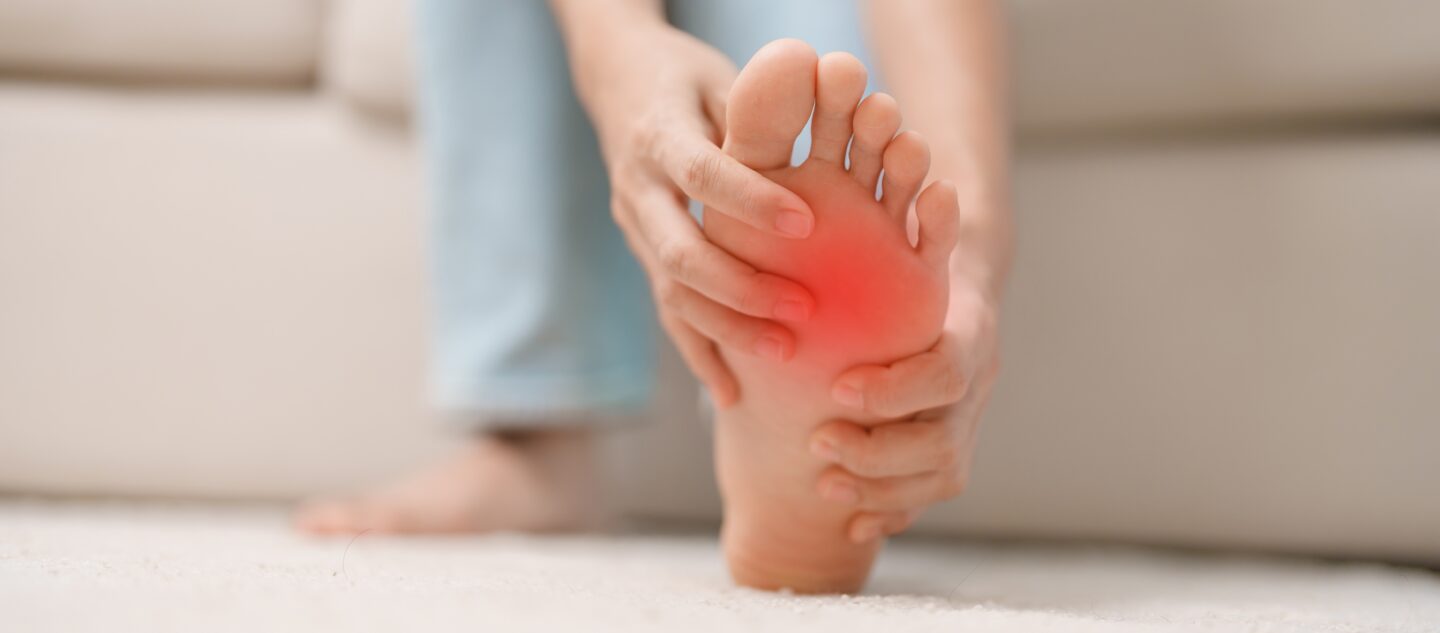
Understanding diabetic foot ulcers: What you need to know
In the UK, an estimated 7% of the population has been diagnosed with diabetes. And for those millions of people, maintaining foot health is a crucial yet often overlooked part of daily care.
One of the most serious complications that can arise from a diabetes diagnosis is a diabetic foot ulcer. This is an open sore or wound that typically occurs on the bottom of the foot. Left untreated, these ulcers can lead to infections, hospitalisation, or even amputation.
Diabetic foot ulcers are a serious but preventable complication. Regular foot care, daily inspection, and prompt treatment of any issues can significantly reduce the risk of ulcers and related complications.
Why are diabetics at risk of foot ulcers and circulation issues?
Diabetes affects the body in multiple ways, but one of its most significant impacts is on circulation and nerve function. High blood sugar levels over time can damage blood vessels and nerves, especially in the extremities like the feet.
Peripheral neuropathy, a common complication of diabetes, reduces the ability to feel pain, heat, or cold. This means that a person with diabetes might not notice a small cut, blister, or pressure sore. When this happens, that minor issue can worsen without treatment.
At the same time, poor circulation caused by damaged blood vessels slows down the healing process. The combination of unnoticed injury and reduced healing capacity creates the perfect storm for the development of foot ulcers. Even simple pressure from poorly fitting shoes or walking barefoot can lead to ulcers in people with diabetes.
Warning signs of a diabetic foot ulcer
Early detection is key. Here are some signs and symptoms to watch for:
- Redness or swelling around a specific area of the foot
- Persistent drainage or pus, especially if it soaks through socks
- Foul odour coming from a wound
- Black or discoloured tissue (a sign of necrosis)
- Reduced sensation in your lower limbs
- Pain or tenderness in the area
- Warmth around a wound site, which can indicate infection
- Skin changes such as calluses or thickened areas that might indicate pressure points
Even without a visible wound, these warning signs should prompt concern, especially if they don’t resolve quickly.
When to see your doctor
If you have diabetes, any foot injury — no matter how minor — warrants attention. You should see your doctor if:
- You notice an open sore or wound on your foot
- There is increased redness, swelling, or warmth, which could signal an infection
- There is no improvement after a course of antibiotics
- You observe discolouration/bruising (especially black or blue areas) or numbness
- The ulcer doesn’t start to heal within a few days or appears to worsen
- You develop fever or chills, which may indicate that an infection has spread
Early medical intervention can prevent complications. Your GP may prescribe antibiotics, perform debridement (removal of dead tissue), perform wound cleansing, or recommend special footwear or dressings to protect the wound and promote healing.
If you notice a foot ulcer, make sure you take photos of its progression, these will help your GP and other healthcare professionals give you appropriate treatment.
Where can negligence happen?
Negligence by a medical professional can occur in a number of ways in relation to the treatment of a diabetic foot ulcer:
- Failure to recognise the presenting symptoms of a diabetic foot ulcer
- Failure to provide off-loading advice
- Failure to refer the patient in sufficient time to a speciality diabetic foot clinic and/or vascular surgeon.
- Failure to prescribe antibiotics where an infection is suspected.
- Failure to perform an angioplasty in sufficient time.
It should be noted that negligence mostly occurs in failure to recognise the symptoms and refer quickly. The longer the delay in advance of surgery, the more difficult it is to successfully heal the ulcer and the greater the risk of amputation becomes.
If I have been affected by a diabetic foot ulcer – who can I talk to?
As medical negligence solicitors, we are aware of how important it is that the symptoms of a diabetic foot ulcer are noticed quickly, diagnosed correctly, and treated as soon as possible.
We understand that limb loss can be a traumatic and life changing experience. We can provide both legal advice and access to practical support services to help you cope physically and emotionally with the condition.
While compensation won’t change what has happened to you, it can help to aid your recovery as you move forward with your life. Making a claim could help you cover the cost of future treatment and rehabilitation (including prostheses), as well as any physical or mental therapy you may require.









